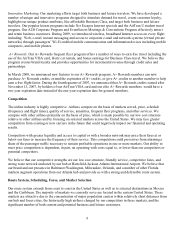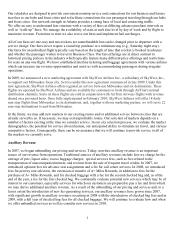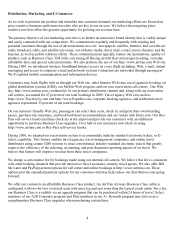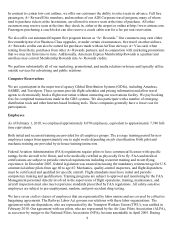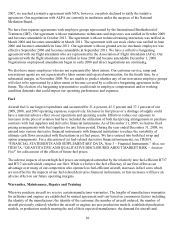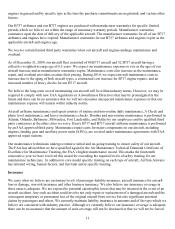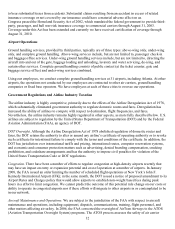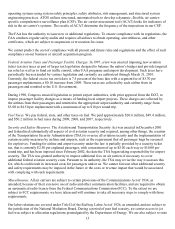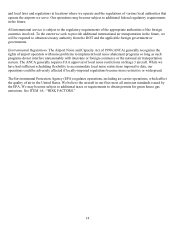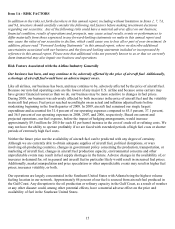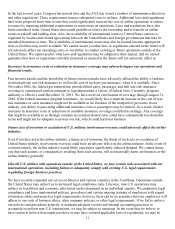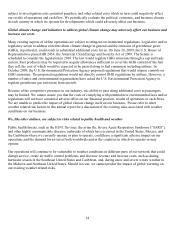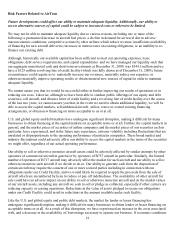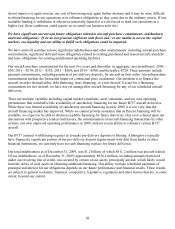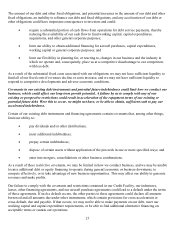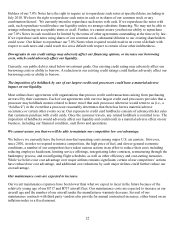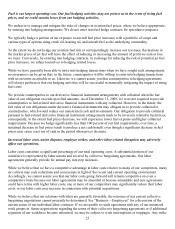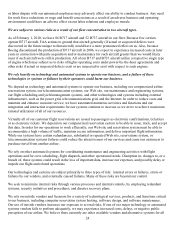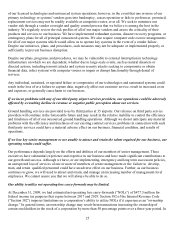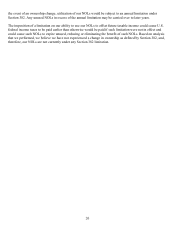Airtran 2009 Annual Report Download - page 25
Download and view the complete annual report
Please find page 25 of the 2009 Airtran annual report below. You can navigate through the pages in the report by either clicking on the pages listed below, or by using the keyword search tool below to find specific information within the annual report.16
The airline industry is highly cyclical, and the growth in demand for air travel is correlated to the growth in
the U.S. and global economies.
The profitability of our operations is especially influenced by the condition of the United States economy,
which impacts the demand for discretionary travel and our competitive pricing position. Most air travel is price
sensitive and discretionary travel, which is a substantial portion of our business, declines during economic
downturns. A continuation of the current weak economic environment or a return to worsening economic
conditions could have a further significant adverse effect on our results of operations, cash flows, and financial
condition.
The airline industry is intensely competitive and some of our competitors have greater financial resources.
The airline industry in general, and the low-fare sector in particular, is highly competitive. Our airline
competitors include other major domestic airlines as well as foreign and regional airlines, some of which have
greater financial resources. We face competition from other existing low cost carriers and in the future could
face competition from start-up airlines seeking to employ low-cost strategies. In most of the markets which we
currently serve, and in most of the markets which we expect to serve within the coming year, we compete or
expect to compete with at least one other low-cost airline and one or more major legacy airlines. Our revenues
are, and will continue to be, sensitive to numerous competitive factors, and the actions of other airlines in the
areas of cost structure, pricing, scheduling, and promotions, all of which can have a substantial adverse impact
on individual airline and overall industry revenues. These factors may become even more significant in periods
when the industry experiences large losses, as airlines, under financial stress or in bankruptcy, may institute
pricing structures intended to achieve near-term survival rather than long-term viability. Any increased
competition could have a negative impact on our business and operating results.
Our reputation and financial results could be negatively affected in the event of a major aircraft accident.
An accident involving one of our aircraft could involve not only repair or replacement of the damaged aircraft
and the consequent temporary or permanent loss of such aircraft from service, but also significant potential
claims by passengers and others. Moreover, any aircraft accident, even if fully insured, could cause a public
perception that our aircraft are less safe or reliable than other airlines, and that could have a negative effect on
our business. The occurrence of one or more incidents or accidents involving our aircraft could have a material
adverse effect on the public’s perception of us and our future operations.
We are required by the DOT to carry liability insurance on each of our aircraft. We currently maintain liability
insurance in amounts and of the type consistent with industry practice. Although we currently believe our
insurance coverage is adequate, the amount of such coverage may be decreased in the future or we may be
forced to bear substantial losses from accidents. Substantial claims resulting from an accident in excess of
related insurance coverage could have a material adverse impact on our business and financial results.
We are subject to extensive regulation by the FAA, the DOT, and other governmental agencies, compliance
with which could cause us to incur increased costs and negatively affect our business and financial results.
We, as well as airlines in general, are subject to a wide range of governmental regulation, including regulation
by the FAA. A modification, suspension, or revocation of any of our FAA authorizations or certificates could
adversely impact our business.


